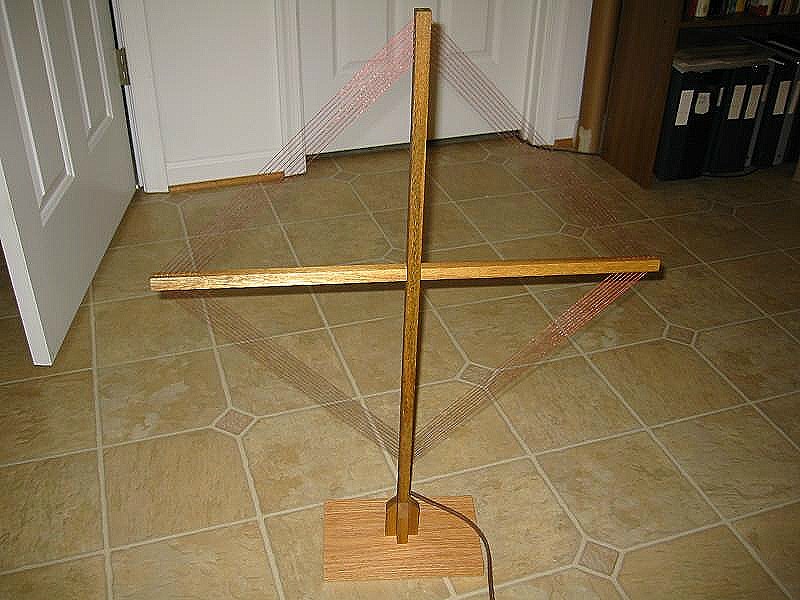
Brian Justin, WA1ZMS/4
17 Feb
2008

The loop antenna is built using a simple wood form to hold the wire.
The loop frame is made from 1/2" square hardwood strips that are 24" long. They are nailed together like a plus sign. Holes are drilled in each end of the arms to string the wire. In the antenna shown here, the wire is 11/36 Litz wire. (That would be 11 strands of #36 wire), but #22 magnet wire would be just fine if you do not have any Litz wire available.
The loop is uses 8-turns of wire. Each turn is spaced 1/4" from the next turn. Holes are drilled in the end of each piece of wood and the holes are spaced 1/4" apart. The wire loop measures 75uH.
I placed a .001uF cap across the terminals of the loop to help resonate it near 500KHz. But just the loop alone (without a cap) should work as well. Use a good quality capacitor here, polypropylene, mica or polyester caps will give the best results. Ceramic disk caps tend to have higher losses and do not give as high a "Q" factor, however, they will work if that's all you happen to have available.
I used two tiny nails as the terminals of the loop and soldered the tuning capacitor directly across the nails. A short length of speaker wire runs from the nails on the loop directly to the terminals of the LNA. The design of the antenna is such that the loop and the tuning capacitor act as a parallel resonant circuit which has a very high impedance at the frequency of interest, in this case, close to 500 KHz.
The null of the loop's pickup pattern is when the antenna has its broadside towards the direction of the signal.
The 470k input impedance of the LNA will load the resonant loop slightly and lower the Q, but it will also broaden the bandwidth of the antenna so you're not stuck with just a kHz of bandwidth at the exact resonant frequency.
The LNA has only a few dB of gain at 500KHz, but its primary purpose is to act as an impedance transformer taking the Hi-Z of the loop down to 50 ohms to drive the RX so that you don't suffer from signal loss due to the impedance differences.
The amplifier is powered by a 9v battery and since the LNA draws only 3mA when running, an 9v battery should last for a long time.

[home]
All Pages, photographs, text or other data in any form on this Web Site are Copyright © 2008 by Ralph M. Hartwell II or their respective authors.